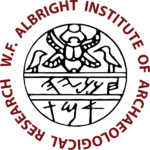2025-2026 Fellows & Projects
Fellows by Year
- Fellows 2025–2026
- Fellows 2024-2025
- Fellows 2023-2024
- Fellows 2022-2023
- Fellows 2020-2022
- Fellows 2018-2019
- Fellows 2017-2018
- Fellows 2016-2017
- Fellows 2015-2016
- Fellows 2014-2015
- Fellows 2013-2014
- Fellows 2012-2013
- Fellows 2010-2011
- Fellows 2009-2010
- Fellows 2008-2009
- Fellows 2007-2008
- Fellows 2006-2007
- Fellows 2005-2006
- Fellows 2004-2005
- Fellows 2003-2004
- Fellows 2002-2003
- Fellows 2001-2002
- Fellows 2000-2001
- Fellows 1999-2000
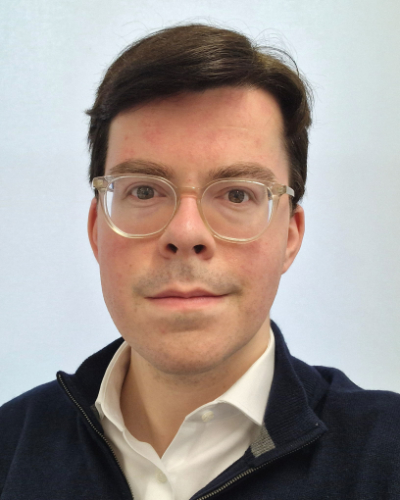
Moritz F Adam
Ernest S. Frerichs Annual Professor
Lecturer in Hebrew Bible and Ancient Judaism, Faculty of Theology and Religion, University of Zurich
Project Title
Time and Space – Temporal and Spatial Conceptions, Imaginations, and Transformations in Ancient Jewish Apocalyptic Literature
Project Description
This project takes a specific interest in the complex dynamic of the critical negotiation of apocalyptic thinking in antiquity. It focuses especially on two essential subjects—time and space—which stand as particularly illustrative of (anti-)apocalyptic negotiations in ancient Judaism and beyond. In discussing the nuance, vitality, subversiveness, and lasting impact of ancient apocalypticism up until modern societal and political discourses, it contributes to historical and theological scholarship as well as our modern engagement with antiquity.
Biography
Moritz F. Adam teaches Hebrew Bible and Ancient Judaism in Zurich, Switzerland, and is the current Ernest S. Frerichs Professor at the Albright Institute. His research focuses on the history of ideas in Second Temple Judaism and takes an interest in moments of transition in Jewish literature and thought during this period, and their entanglement with Classical literature and the Ancient Near East.
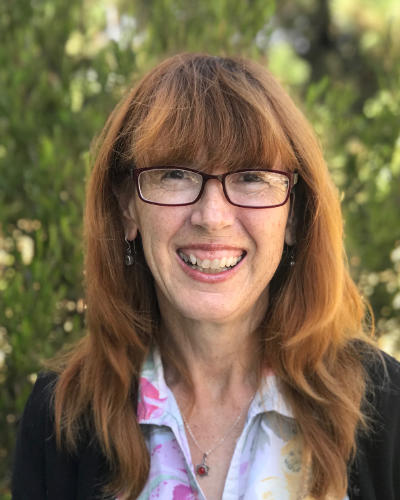
Sophia Avants
Junior Albright Fellow
Project Title
Can Architecture Help Us Understand Shifts in Jewish Ritual Purity Practices? A Case Study of Units 2 and 4b in the ancient city of Sepphoris, Israel
Project Description
Sophia Avants is working on a visual model of the water installations at Sepphoris/Zippori in the Lower Galilee. The relationship between cisterns and ritual stepped pools has become clearer through ArcGIS mapping, and now the project is being developed through carbon 14 analysis and 3D construction. Preliminary climate data suggests that amendments were made to the installations due to warming temperatures and a decline in rainfall. The data collected will test this hypothesis further. She will be working with researchers at the Weizmann Institute and Hebrew University, as well as the IAA.
Biography
Sophia Avants received her PhD from Claremont writing on Mishnah Yoma. She is interested in how purity regulations shaped emerging Judaism in the late Second Temple and Early Rabbinic period. Archaeology provides a window into when rituals were taken up and abandoned. Her current project inquires into whether changes in regional climate forced a shift in purity observance.
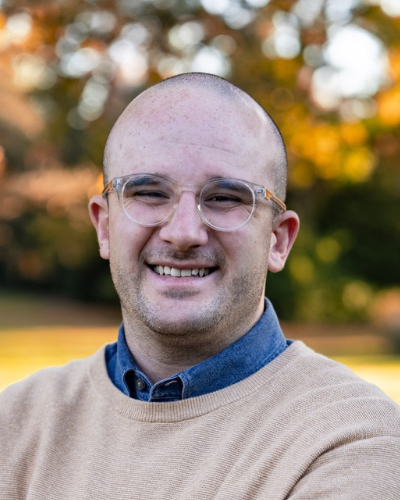
C. Carter Barnett
Fulbright Israel PhD Research Fellow
PhD Candidate, History of Medicine, Johns Hopkins University
Project Title
More than Medicine: Christian Missions, Hospital Care, and the Longue Durée of Institutional Charity in Palestine, 1300-1948
Project Description
During his fellowship at the Albright Institute, he will conduct research for his dissertation project that frames the introduction of Christian mission hospitals in late Ottoman Palestine within a long history of institutional charity in the Middle East. Rather than solely attributing the proliferation of mission hospitals to medical efficacy, his project evaluates how these hospitals served a similar institutional function as the pre-established Islamic bīmāristān. Reading missionary records with and against the grain elucidates how patients valued mission hospitals for more than medical efficacy as they regularly utilized them for charitable care: free medicine, refuge, and housing. At the Albright Institute, he will corroborate these observations with textual sources held in Jerusalem and material evidence found across Israel, including medical artifacts and hospital architecture.
Biography
C. Carter Barnett is a PhD Candidate in the Department of the History of Medicine at Johns Hopkins University. He researches the social history of hospital care in the eastern Mediterranean, focusing on the intersections between charity, religion, and evolving medical practices. Before pursuing his PhD, he received his BA in History and Arabic from Baylor University and an MA in Middle Eastern Studies from the University of Texas at Austin.

Jeffrey Blakely
Senior Albright Fellow
Professor Emeritus, Classical and Ancient Near Eastern Studies, University of Wisconsin-Madison
Project Title
Identifying the Excavated Materials from Tell el-Hesi in Storage at the Israel Antiquities Authority
Project Description
The Joint Archaeological Expedition to Tell el-Hesi excavated said site over eight summer seasons between 1970 and 1983. Six final reports have appeared, but much remains to be published. Except for a few loci with confused stratigraphy, all loci have been stratified. In most cases those seeking to study Hesi materials and knowing the stratigraphic findspot would not be able to identify those materials in the database and thus they would be unable to study them. Jeff Blakely will recatalogue all of the Hesi materials stored at the IAA with correct provenance and prepare the basic descriptions of all unpublished materials stored at the IAA for final publication in the Hesi final report series.
Biography
Jeffrey Blakely came to a field school at Tell el-Hesi in 1971, and it changed his life. Soon he switched studies to archaeology. Graduate degrees are from Wilfrid Laurier University and the University of Pennsylvania. He has now worked at Hesi into his fifty-third year and has numerous and varied publications. Beyond Hesi he worked at Caesarea Maritima as well as in Yemen, Jordan, and North America.
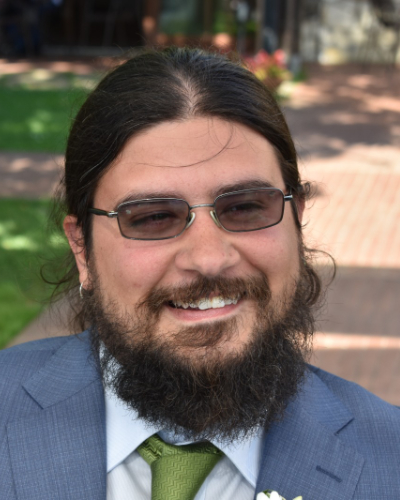
Luca Brancazi
Marcia & Oded Borowski/George A. Barton Research Fellow
Research Fellow, Department of Antiquities, Sapienza University of Rome
Project Title
FISHeS: Faunal InsightS at the Holy Sepulchre basilica
Project Description
Luca Brancazi’s research at the Albright Institute of Archaeological Research focuses on the study of aquatic faunal remains, particularly fish, recovered from archaeological excavations at the Basilica of the Holy Sepulchre in Jerusalem. Conducted as part of the Agia Polis Project by Sapienza University of Rome, these excavations have unexpectedly yielded thousands of faunal remains spanning all chronological phases of the site. Brancazi’s work aims to systematically catalog and analyze the fish remains, highlighting their potential to illuminate food practices, trade networks, and religious dietary customs in Jerusalem from the Early Christian period to the modern era. His methodology integrates traditional zooarchaeological approaches with the experimental use of three-dimensional documentation of remains bearing butchery marks, enabling a more detailed analysis of this aspect.
Biography
Luca Brancazi is a researcher in medieval archaeology, with expertise in the analysis of faunal remains. His work has focused on the analysis of food and butchery residues in late-antique, medieval and post-medieval contexts, including sites in the city of Rome. His doctoral research involved urban and castellated sites in northern Lazio. Currently, he hold a fellowship at the Sapienza University of Rome, where he study faunal remains from the Holy Sepulchre excavations in Jerusalem.
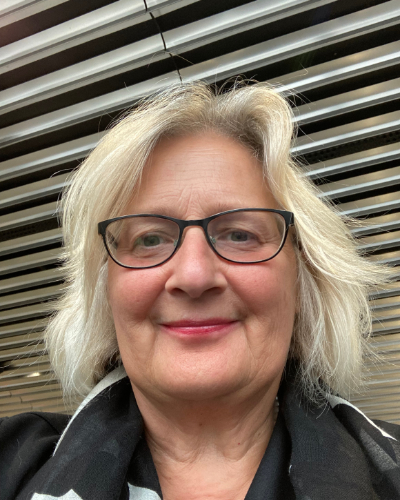
Kristin De Troyer
Seymour Gitin Distinguished Professor
Professor of Biblical Studies and Ecclesiastical History, Paris Lodron University of Salzburg
Project Title
Tracing Anti-Jewish Initiatives and Arguments and Responses to Them
Project Description
Kristin De Troyer will study those texts in the book of Esther and its cognate versions that deal with Haman’s plan to kill all the Jews and the arguments that he developed in order to convince the king. She will not only study the Hebrew text but also the Greek versions in order to see how the arguments were received and changed. She will also analyse how the reversal of the plans were set in motion and what the Jews did instead.
Biography
Kristin De Troyer is Professor of Hebrew Bible / Old Testament at the University of Salzburg, Austria. She is also an honorary Professor of Hebrew Bible at the University of St Andrews, Scotland, UK and holds a distinguished fellowship of the Hebrew University of Jerusalem in Israel. She has studied in Louvain, Belgium and in Leiden, the Netherlands. Her academic stations include Claremont, California and St Andrews, Scotland. Currently she is also academic secretary of the European Academy of Sciences and Arts.
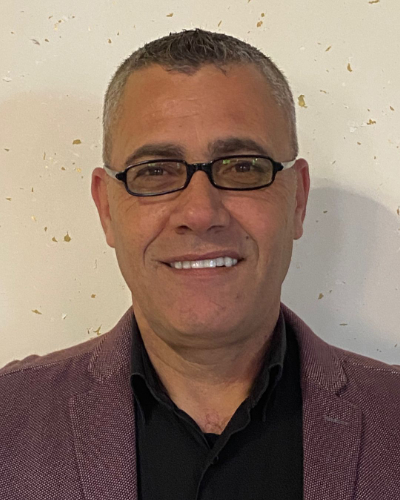
ISSAM HALAYQA
SEYMOUR GITIN DISTINGUISHED PROFESSOR
Professor in the Department of History and Archaeology at Birzeit University
Project Title
Persian and Archaic Greek Numismatic Finds from the Palestinian Territories Project Supplementation
Project Description
This project will be carried out to complete the research project of the Persian coins from the Palestinian territories, that I have started on Sep-Dec. 2024, as a new collection of Greek coins appeared. The collections of Parisian and Greek silver (imperial and provincial, 650-63 BC.) coins that came from the West Bank and Gaza in the period Sep-Dec. 2024. The collections display multicultural iconographic designs. They will be classified into: Lydian, Persian imperial and satrapal from Anatolia, Phoenician provincial coins of Sidon, Tyre, Philistian-styled coins, Philistian imitation of the Athenian type, Philistian municipal coins of Gaza, Ashkelon and Asdod, Samarian, Idumean and Greek coins.
The main goal is to complete the research I started, and to analyze the coins in order to produce publications of first-hand data, which will enrich knowledge and contribute to the field of numismatics locally and worldwide. Meanwhile the stay at Albright offers a wide network with international and local scholars.

Shulamit Miller
Senior Albright Fellow
Research Associate, Institute of Archaeology, The Hebrew University of Jerusalem
Project Title
Tiberias (Ṭabarīyah) on the Sea of Galilee: The Early Islamic Remains
Project Description
Shulamit is currently working on a co-authored publication of the late Yizhar Hirschfeld’s excavations in Tiberias in Galilee. The largescale excavations exposed remains dating from the first through eleventh centuries CE, including public and private buildings, as well as urban infrastructure. The wealth of material culture substantiates the city’s importance and far-reaching economic connectivity. While in residence at the AIAR Shulamit will concentrate on the early Islamic remains, focusing particularly on the city’s resilience and the ways in which its residents responded to internal and external stress factors, such as earthquakes, invasions, and environmental shifts. She will dedicate her time to completing the final chapter of the monograph, discussing the growth and ultimate diminishment of the early Islamic city, and will expand the study into an article exploring the dynamics of urban resilience in the early Islamic southern Levant.
Biography
Dr. Shulamit Miller is an archaeologist whose research engages visual and cultural history to explore transregional connectivity within the Late Hellenistic through Early Islamic Mediterranean worlds. Focusing particularly on the southern Levant, her scholarship includes varied topics, such as houses and daily life, urban planning and development, monumental architecture, urban gardens and sustainability, mosaic art, Jewish and Christian art and architecture, and other aspects of the perception, manipulation, and representation of ideologies through built space.
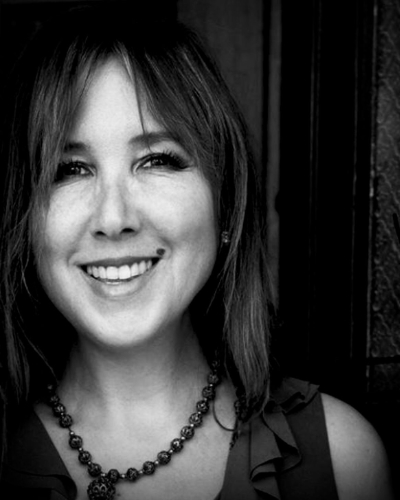
Sonia Najjar
Senior Albright Fellow
Independent Researcher
Project Title
Transforming Jerusalem: Civil Society, Sacred Law and Structures of Meaning
Project Description
Dr. Najjar was awarded a Senior Albright Fellowship through the W.F. Albright Institute of Archaeological Research (AIAR) to build upon her ethnographic PhD research and adapt it into a book project. She is focused on a socio-legal study drawing from historical narratives, civil society, theology, archaeology and heritage tourism to examine changes in Jerusalem. Although her work is interdisciplinary, it also relies heavily on archaeological and biblical interpretations. The fellowship will allow her to make use of AIAR’s invaluable library holdings related to her topics of interest. As a scholarly hub that attracts important members of the community, the AIAR will facilitate connections with other academics who are working on related fields from local universities as well as civil society actors adding to the dynamic nature of her research.
Biography
Dr. Najjar has a PhD in Law from Queen’s University Belfast and was affiliated with The Senator George J. Mitchell Institute for Global Peace, Security and Justice. She holds an MSc in Global Politics and another in Social Policy and Planning in Developing Countries from the London School of Economics and Political Science with a BA from UC Berkeley. Her interests include Jerusalem, law, archaeology, civil society, memory studies, identity, historical-present narratives and peace.

Christie Pavey
Carol & Eric Meyers Doctoral Dissertation Fellow
PhD Candidate, History, Royal Holloway, University of London; Hebrew University of Jerusalem
Project Title
Vita Willibaldi: A New Translation of the Eighth-Century Pilgrim Narrative
Project Description
Extensive pilgrimage within the Holy Land had a profound effect on Willibald of Eichstätt, the eighth-century traveler and later bishop of Eichstätt. During my fellowship at the Albright Institute, I will create a new English translation of the Vita Willibaldi that reflects recent scholarship on Willibald and the context of his travels, including work presented at the “Willibald in Jerusalem” conference celebrating the 1300th anniversary of Willibald’s arrival in Jerusalem (St. Martin’s Day, 724). I will participate in the academic community of Jerusalem and in particular those who research pilgrimage, Willibald, and these lands. I will also visit the places he visited and consult those with more of a living knowledge of the places to which Willibald traveled. The resulting publication will join the Brepols Library of Christian Sources, to provide readers with a updated and accessible translation of this fascinating narrative.
Biography
Dr. Christie Pavey studies late antique and early medieval history, focusing on North Africa, canon law, and manuscripts. Her PhD (Royal Holloway, University of London, 2025) was entitled “Bishops, Councils, and Networks of Empire in the Church of Roman Africa, 390-427 CE.” She arrived in Jerusalem in 2021 as a Visiting Research Fellow at Hebrew University of Jerusalem and looks forward to discovering more about the city and her peoples, both past and present.
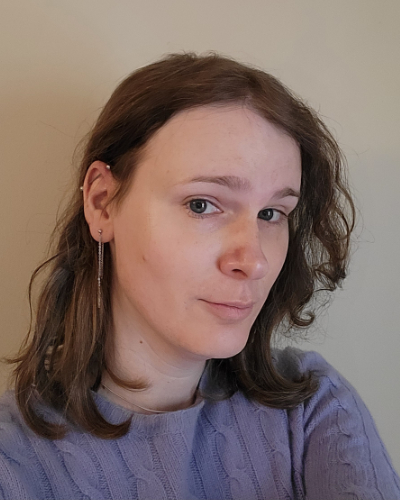
Aren Wilson-Wright
Lydie T. Shufro Summer Research Fellow
Assistant Instructional Professor, Middle Eastern Studies, University of Chicago
Project Title
Ancient ABCs: Toward a Digital Edition of the Early Alphabetic Inscriptions
Project Description
During her time at the Albright Institute, Aren will study and photograph the early alphabetic inscriptions housed in the Israel Museum and Nelson Glueck School of Biblical Archaeology using advanced imaging techniques such as Reflectance Transformation Imaging (RTI) and Multispectral Imaging (MSI). The resulting images will form the basis for a new, digital edition of the early alphabetic inscriptions that she is in the process of preparing. RTI and MSI are particularly well-suited to the documentation and preservation of ancient texts and can bring out details that are otherwise imperceptible to the naked eye.
Biography
Aren Wilson-Wright received her PhD in Hebrew Bible/Ancient Near East from the University of Texas at Austin in 2016. She then held postdoctoral positions at the University of Zurich and Radboud University before accepting a position as Assistant Instructional Professor of Northwest Semitics at the University of Chicago in 2024. Her research focuses on the origins of alphabetic writing and the role of non-Yahwistic deities in ancient Israelite religions.
